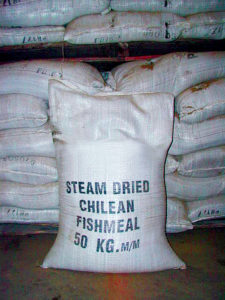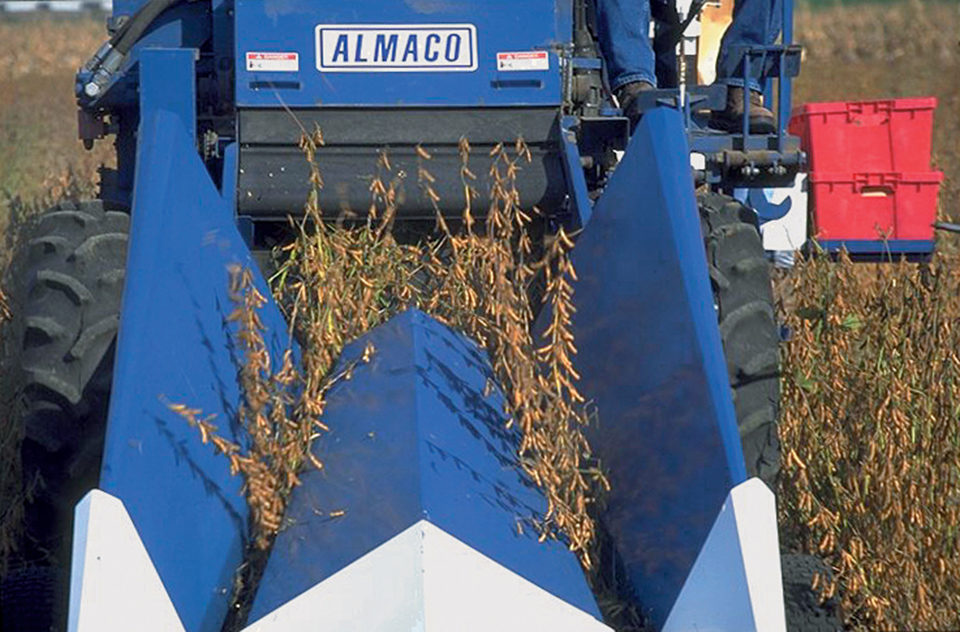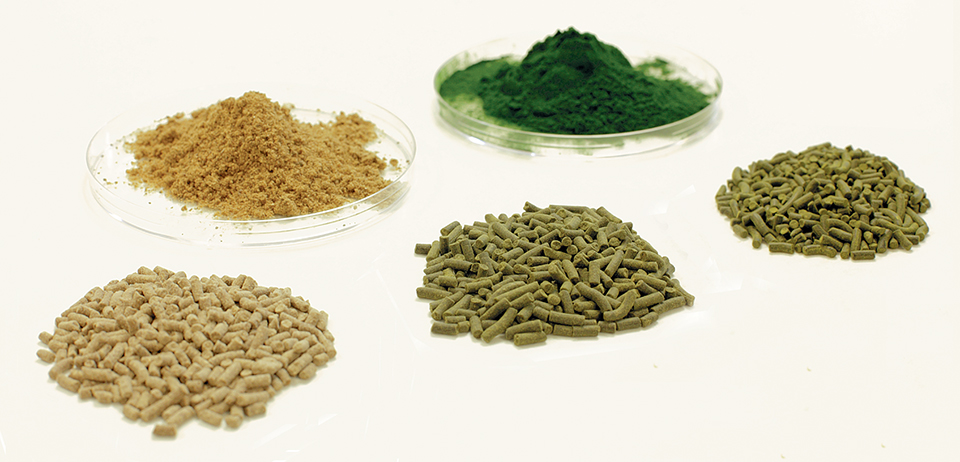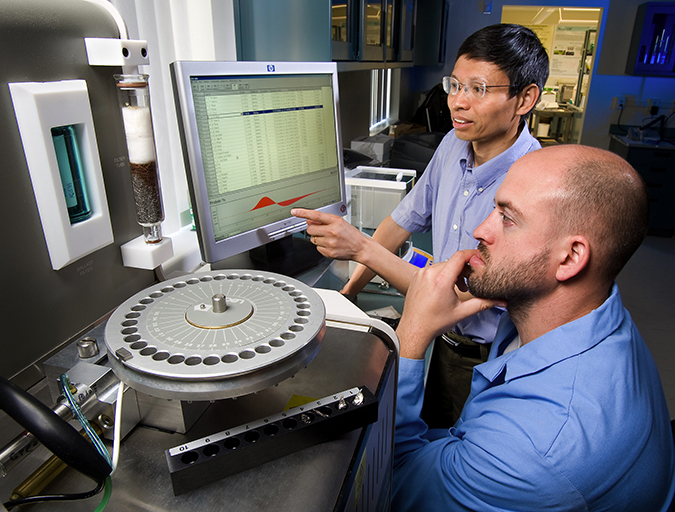Protein substitutions in fish feeds require time and technology

Over the past decade, global aquaculture production has doubled from 25 million metric tons (MT) to about 52 million MT and now constitutes about half of the global fish supply. Over the next decade, aquaculture production will need to increase 50 percent over 2010 levels to meet expected demand.
The development of methods by which to estimate the nutritional requirements of fish was a major advance that continues to support the rapid growth of aquaculture. Without reliable estimates of the dietary needs of fish and shrimp, feeds cannot be formulated correctly.
Although aquaculture has experienced spectacular growth over the past decade, the industry has significantly reduced fishmeal levels in feeds for all major species of farmed fish. However, the total amount of fishmeal used by the aquaculture sector has increased because production grew faster than the rate of fishmeal reduction in feed formulations.
Currently, about 65 percent of global fishmeal production and over 80 percent of fish oil production are used in fish feeds, about double the percentage from a decade ago. Although this is a significant increase, it is much less than was predicted in 2000 because fishmeal and fish oil levels in fish feeds have been reduced in many species by 50 percent.
This has occurred because of extensive research on the use of alternate protein and oil sources in fish feeds, including amino acid digestibility, more precise feed formulation and a wider range of supplemental feed-grade amino acids that can make up limitations when plant proteins replace fishmeal.
Economic pressure
Since 2006, economics have forced fish feed producers to use less fishmeal and fish oil. Going forward, economics will lead to even lower levels of those ingredients in feeds.
Feeds for omnivorous fish species such as tilapia, carp and catfish can easily be formulated without fishmeal – even fry and fingerling feeds that until now often contained fishmeal. Feeds for salmonids without fishmeal are now commercially available. These feeds contain land animal proteins or rendered products. However, for many other farmed fish species, reducing or eliminating fishmeal and fish oil in feeds will not be easy.
The problem is not associated with balancing essential amino acids in fishmeal-free feeds, although for many species, especially marine species, the dietary requirements for essential amino acids are not known. Rather, the problem is that fishmeal is a complex material containing a wide range of other nutrients and biologically active compounds that are absent in plant protein concentrates.
Conversely, plant proteins contain biologically active compounds not present in fishmeal that alter or interfere with digestion and metabolism. Another problem is that plant proteins contain more fiber and non-soluble carbohydrates that are not digestible and contribute to water quality problems.
Further research essential
Although it is unnecessary to completely eliminate fishmeal from all fish feeds, the total quantity of fishmeal used in all fish feeds cannot grow much past current amounts. To address the gaps in knowledge that must be filled to reduce fishmeal use for marine fish and other difficult species, further research utilizing new approaches is essential. Genomics and proteomics will play crucial roles by revealing the complex metabolic effects associated with replacing fishmeal with plant protein concentrates.
For example, amino acids signal anabolic and catabolic pathways as they are digested and absorbed. The gastrointestinal tract is more than an absorptive organ, it is also an endocrine organ that influences and even controls many aspects of growth and metabolism.
Plant protein concentrates have different amino acid profiles than fishmeal, and the issue is not meeting the minimum dietary requirement for essential amino acids, but rather the effects of having an excess of some amino acids. The rates of digestion and absorption of amino acids can also differ between fishmeal and plant protein concentrates and thereby affect metabolism.
Another key area of research will be to discover the effects of biologically active compounds in fishmeal and plant proteins, and develop ways to compensate for their absence in plant-based feeds or counteract their effects. Research with rainbow trout is showing promising results from selective breeding to develop strains that exhibit improved performance when fed plant-based feeds. Again, genomic and proteomics research will be essential to understand the mechanisms responsible for differing performance of selected strains so the information can be used to improve the performance of other species of fish.

Technology aids
New developments in high-throughput sequencing coupled with new computational software and data-mining tools are bringing the cost of this technology within reach of researchers in aquaculture. This will change how molecular biology is used to understand the effects of protein substitutions in fish feeds.
Instead of looking at expressions of single genes or groups of genes, researchers can look at the wider metabolic effects of dietary changes using pathway-building approaches. Combining these techniques with cellular and physiological responses will generate the information needed to understand the responses of fish to dietary changes and lead to rational alterations in feed formulations in which plant proteins supply a larger proportion of dietary protein for fish.
Progress has been made to lower fishmeal levels in feeds for rainbow trout and Atlantic salmon. Both have natural food habits and physiological systems similar to other high-value farmed fish species which, at this time, grow poorly when dietary fishmeal levels are reduced. Most likely these species are not profoundly different from salmonids, just different enough to require more effort in shifting their production to a more sustainable basis.
(Editor’s Note: This article was originally published in the July/August 2010 print edition of the Global Aquaculture Advocate.)
Now that you've reached the end of the article ...
… please consider supporting GSA’s mission to advance responsible seafood practices through education, advocacy and third-party assurances. The Advocate aims to document the evolution of responsible seafood practices and share the expansive knowledge of our vast network of contributors.
By becoming a Global Seafood Alliance member, you’re ensuring that all of the pre-competitive work we do through member benefits, resources and events can continue. Individual membership costs just $50 a year.
Not a GSA member? Join us.
Author
-
Ronald W. Hardy, Ph.D.
Director, Aquaculture Research Institute
University of Idaho
3059F National Fish Hatchery Road
Hagerman, Idaho 83332 USA
Tagged With
Related Posts

Aquafeeds
A look at phospholipids in aquafeeds
Phospholipids are the major constituents of cell membranes and are vital to the normal function of every cell and organ. The inclusion of phospholipids in aquafeeds ensures increased growth, better survival and stress resistance, and prevention of skeletal deformities of larval and juvenile stages of fish and shellfish species.

Health & Welfare
A holistic management approach to EMS
Early Mortality Syndrome has devastated farmed shrimp in Asia and Latin America. With better understanding of the pathogen and the development and improvement of novel strategies, shrimp farmers are now able to better manage the disease.

Aquafeeds
Algae alternative: Chlorella studied as protein source in tilapia feeds
Chlorella and other species have potential as protein sources in aquafeeds. In trials with tilapia fry raised in a recirculating system, the fish received a fishmeal-based control diet or feeds with portions of the fishmeal replaced by Chlorella.

Aquafeeds
Alternative feed ingredient universe to convene at F3 meeting
What started out as a simple yet ambitious contest to drive innovation in the aquafeed sector has evolved into a fully global competition – and collaboration – amongst ingredient suppliers and feed manufacturers.


